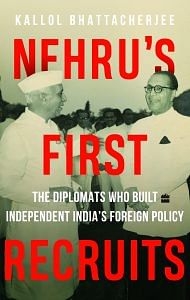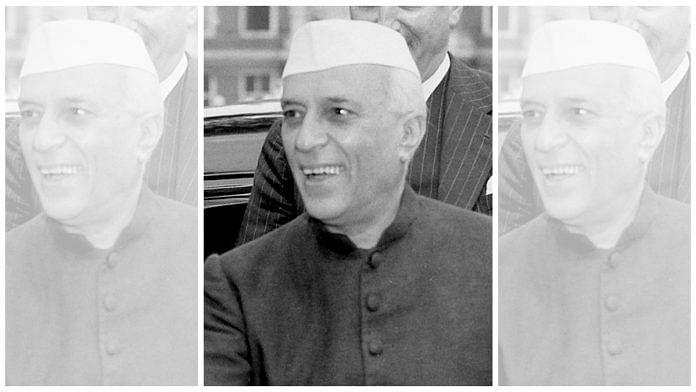What! Come to your temple where even Hindus of other castes are not permitted entry, not to speak of members of other communities who are all equally near and dear to me. No, Sir, definitely not,’ Netaji said, rejecting the Dussehra invite from the head priest of the Chettiyar temple in Singapore. The head priest of the Chettiyar temple in Singapore had planned a special Dussehra festival for Netaji Subhas Chandra Bose. It was a grand occasion for the Indian community, and he wanted Netaji to be the chief guest. Word had spread that Netaji was in Singapore and the head priest arrived to invite Netaji.
The Indian National Army had thought of the appointment as a courtesy call by the orthodox priest and had not anticipated the invite. Netaji, however, was in no mood to accept the invite. Word had gone out that the temple in Singapore was not open to all Hindus and that people of other communities were not allowed entry. The previous few years were tumultuous in the life of Subhas Chandra Bose. Staunchly against the idea of Indians fighting for the British rulers, Netaji quietly left Calcutta on the night of 16– 17 January 1941 for a journey that he had carefully planned. From Calcutta, Netaji reached Germany where he launched the Indian Legion with the help of the Indian POWs who were arrested by General Rommel’s forces.
Hitler’s war machine, however, was past its peak by the early 1940s, when Japan scored a big victory against the British in Southeast Asia and captured Singapore. The Indian community in Germany reached out to Netaji during his stay in the country and provided him with the support he required. Netaji spoke German well, but he also required local Indian German speakers for his larger engagement; among such speakers he found a worthy friend in an Indian student, Abid Hasan Safrani, who was one of the civilians to join the Indian Legion. Safrani’s association with the charismatic Indian leader increased as Netaji grew disillusioned with the German war against the Soviet Union, as both Germany and the Soviets were potential supporters for India’s liberation. Safrani was the only compatriot to join Netaji on the epic journey in a German U-boat in 1943.
Netaji was a symbol of communal amity in India and wanted to take a Hindu, a Muslim and a Sikh aboard on the German submarine, but on being told by the German naval officials that he could take only one assistant, he chose Safrani. Netaji and Safrani, despite being untrained civilians, travelled half the world in the U-boat to a rendezvous point over the Indian Ocean near Madagascar. Here the two men were transferred to a rubber dinghy that carried them to a waiting Japanese submarine that had surfaced earlier. Netaji was given a hero’s welcome in Tokyo, where Hideki Tojo honoured him as the leader of India.
Also read: The spy who sold out Subhas Chandra Bose—he worked with Britain, Germany, USSR, Japan, Italy
It was against this backdrop that British governed Singapore was conquered in February 1942 by the Imperial Japanese Army, which, after consolidating their presence in the region, helped Netaji come to Singapore too in July 1943. In Singapore, Netaji was given a rousing welcome by the large Indian population. On 21 October in the same year, he launched the Provisional Government of Free India or Azad Hind. The Azad Hind government was unequivocal in declaring that India would be freed of British rule through an armed struggle. Throughout this period, Safrani remained with Bose and chronicled the epic adventure.
The India that Netaji wanted to build with the blood and sacrifice of the soldiers of the Indian National Army—INA— would not have any place for any of the divisiveness that permeated Indian politics in the early 1940s. Comrades of the INA knew Netaji was a religious person and would have felt it odd had he gone to the Chettiyar temple and offered his prayers. Closer to Dussehra, the head priest returned to meet Netaji once again. This time, he did not seek appointment and simply arrived with a steely determination in his eyes. Abid Hasan Safrani, the close associate of Netaji, had many responsibilities, and one of those was to decide who could meet the legendary leader who was providing leadership to the INA while in exile in Southeast Asia. Safrani met the head priest and was struck by the ‘look of his eyes’.
There was a marked difference in the way they approached Netaji. Unlike the last time, they stood straight, without bending, and said, ‘Sir, tomorrow evening I am holding an Indian national demonstration in my temple. I shall be grateful if you would preside over it.’ The next day, when Netaji arrived at the temple, he found the temple was filled to capacity with men wearing the uniforms of the INA and the fez worn by Indian Muslims, indicating the composition of the audience.
The priests came to welcome Netaji reverentially and led him and his companions to the sanctum sanctorum, where Netaji performed a puja and submitted the offerings to the deity. Safrani stood a few steps behind Netaji initially, but the priests pushed him to proceed and join Netaji, and there the two—one a Hindu and the other a Muslim—offered the puja and accepted the tilaks that were placed by the head priest. Exiting the temple a bit later, Netaji gently wiped the tilak from his forehead and Safrani followed his leader. Netaji did deliver a speech on that occasion of visiting the temple, but the interaction with the head priest had filled Safrani with such a headiness that he could not register anything. That feeling of oneness that was created by the gesture of the priests pushing him to participate in the rituals had filled Safrani with ‘an invigorating music’.
It was probably this feeling that filled Abid Hasan Safrani when he, with 1,000 other soldiers and high-ranking figures of the INA, marched through the forests and hills of Burma and proceeded to Manipur at a time when defeat was staring the INA in the eye. Abid Hasan Safrani, Karunakara Menon Kannampilly, N. Raghavan and Cyril John Stracey were part of a small group of unique diplomats with their past in the INA of Subhas Chandra Bose which Jawaharlal Nehru recruited to be a part of the new diplomatic brigade of India. Apart from the four, the list included Madan Mohan Khurana, who joined the IFS on 1 October 1948, and Mahboob Ahmed, who joined the foreign service on 1 April 1949.
 This excerpt from Kallol Bhattacharjee’s Nehru’s First Recruits has been published with permission from HarperCollins India.
This excerpt from Kallol Bhattacharjee’s Nehru’s First Recruits has been published with permission from HarperCollins India.



